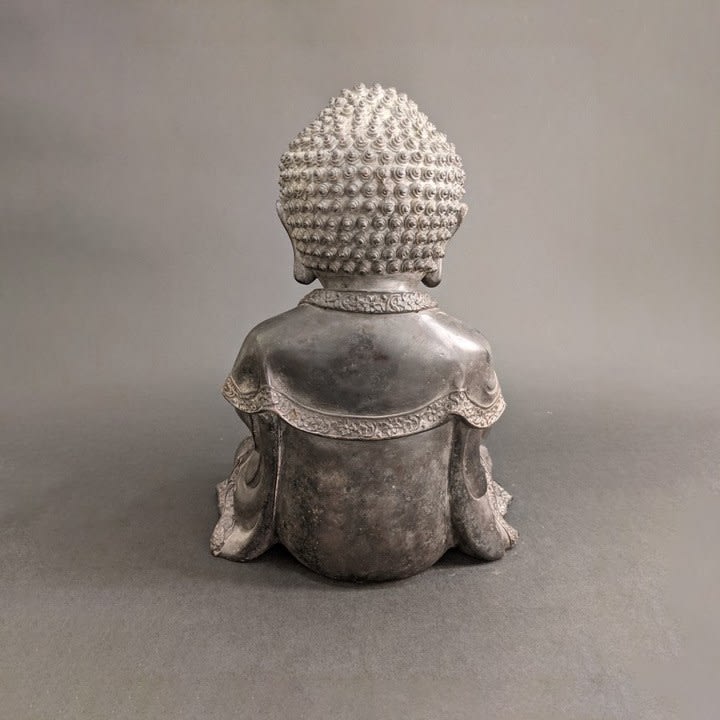Bronze figure of Amitabha, 15th Century CE - 17th Century CE
Bronze
13 x 10 cm
5 1/8 x 4 in
5 1/8 x 4 in
HK.2008
Further images
This is a bronze sculpture of Amitabha. Seated in lotus posture in deep meditation, he places his both hands on his lap, forming the dhyana mudra. His eyes are closed...
This is a bronze sculpture of Amitabha. Seated in lotus posture in deep meditation, he places his both hands on his lap, forming the dhyana mudra. His eyes are closed with a serene expression, flanked by elongated earlobes. The simplistic monastic robe reveals his bare chest marked with a swastika. The base of the sculpture is sealed with a lotus symbol.
As the Tathagata of Western Heaven, Amitabha appears in two forms. When he is in his form body (nirmanakaya), he appears in Buddha outlook. When he is in apparitional body (sambhogakaya), he appears in jewelled bodhisattva outlook and is addressed as Amitayus instead of Amitabha.
Approaching the later period of Ming Dynasty, there was a gradual stylistic change. Departing from the slender and slim physique dominating the Yongle and Xuande era, late Ming sculptures have a broader chest and a thicker torso. The most distinctive feature, perhaps, is the considerably big head, evidently visible in this sculpture.
As the Tathagata of Western Heaven, Amitabha appears in two forms. When he is in his form body (nirmanakaya), he appears in Buddha outlook. When he is in apparitional body (sambhogakaya), he appears in jewelled bodhisattva outlook and is addressed as Amitayus instead of Amitabha.
Approaching the later period of Ming Dynasty, there was a gradual stylistic change. Departing from the slender and slim physique dominating the Yongle and Xuande era, late Ming sculptures have a broader chest and a thicker torso. The most distinctive feature, perhaps, is the considerably big head, evidently visible in this sculpture.













